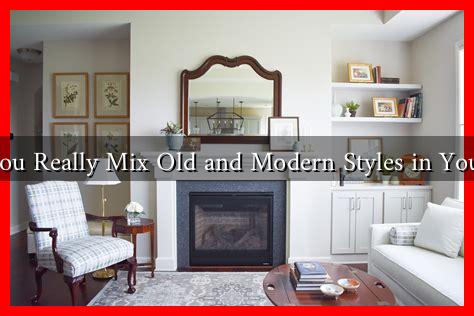-
Table of Contents
Should You Really Mix Old and Modern Styles in Your Home?
In the world of interior design, the debate over whether to mix old and modern styles is a hot topic. As homeowners seek to create unique spaces that reflect their personalities, the blending of different design eras has become increasingly popular. But is this approach truly effective, or does it risk creating a chaotic environment? In this article, we will explore the pros and cons of mixing old and modern styles, provide practical tips for achieving a harmonious blend, and examine real-life examples that illustrate the potential of this design strategy.
The Allure of Mixing Styles
Combining old and modern styles can yield stunning results, offering a fresh take on traditional aesthetics. Here are some reasons why homeowners are drawn to this approach:
- Personal Expression: Mixing styles allows individuals to showcase their unique tastes and preferences, creating a space that feels authentically theirs.
- Timelessness: Incorporating vintage pieces can add character and depth to a home, making it feel more inviting and lived-in.
- Eclectic Appeal: A well-executed mix can create a visually stimulating environment that captures attention and sparks conversation.
Challenges of Mixing Old and Modern Styles
While the idea of blending styles is appealing, it does come with its challenges. Here are some potential pitfalls to consider:
- Clashing Aesthetics: Without careful planning, old and modern pieces can compete for attention, leading to a disjointed look.
- Overwhelming Space: Too many contrasting elements can make a room feel cluttered and chaotic.
- Inconsistent Color Palettes: Different eras often come with distinct color schemes, which can clash if not harmonized properly.
Tips for Successfully Mixing Styles
To create a cohesive look when mixing old and modern styles, consider the following tips:
- Establish a Focal Point: Choose one or two standout pieces from either style to serve as focal points in the room. This can help anchor the design and provide a sense of balance.
- Use a Unifying Color Palette: Select a color scheme that complements both old and modern elements. Neutral tones can often bridge the gap between different styles.
- Incorporate Textures: Mixing textures can add depth and interest. For example, pairing a sleek modern sofa with a vintage rug can create a dynamic contrast.
- Limit the Number of Styles: While it’s tempting to incorporate multiple design styles, limiting yourself to two or three can help maintain a cohesive look.
Real-Life Examples
Many successful interior designers have embraced the mix of old and modern styles. For instance, renowned designer Kelly Wearstler often combines contemporary art with antique furniture, creating spaces that feel both sophisticated and inviting. Similarly, the trend of “modern farmhouse” design has gained popularity, blending rustic elements with sleek, modern finishes.
According to a survey by the National Association of Home Builders, 60% of homeowners prefer a mix of traditional and contemporary styles in their homes. This statistic underscores the growing acceptance and appreciation for eclectic design.
Conclusion
Mixing old and modern styles in your home can be a rewarding endeavor, offering a unique opportunity for personal expression and creativity. While there are challenges to navigate, the potential for creating a harmonious and visually appealing space is significant. By establishing focal points, using a unifying color palette, and incorporating various textures, homeowners can successfully blend different design eras.
Ultimately, the key to mixing styles lies in balance and intention. With thoughtful planning and a clear vision, you can create a home that reflects your personality while celebrating the beauty of both old and modern design. So, should you mix old and modern styles? The answer is a resounding yes—if done thoughtfully, it can transform your living space into a stunning showcase of your unique taste.
For more inspiration on mixing styles in your home, check out Architectural Digest.


